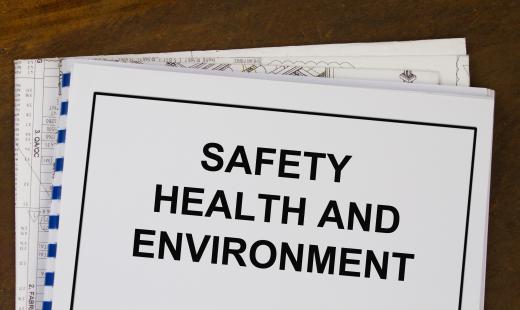What is Safety Engineering?
Safety engineering is a field that focuses on preventing accidents and lessening opportunities for human error in engineered environments or in engineering design. It can be applied to many disciplines, including aerospace, manufacturing, public works, and product design. Some projects apply safety engineering principles to existing products or within completed environments to improve safety and ensure code compliance. Others design features into the system engineering that make safety an integral consideration from the start.
Most engineering work is done within a framework of guiding specifications and codes. These guidelines develop as engineers and users find out what works and what does not work. Small-scale product designs and large-scale transportation infrastructure projects alike apply safety engineering principles based on what is learned from early development through usage. Testing and modeling a product in development can provide clues to what needs improvement. While reliability engineering will determine the likelihood that a product or system itself may fail, safety engineering may identify hazards or dangers for the intended users.

Learning from mistakes can bring hard lessons when health and safety are involved. While major accidents and catastrophes such as plane crashes, industrial fires, medical equipment malfunction, and bridge collapses are bound to happen, safety engineering professionals use these instances to study what went wrong. Utilizing lessons learned in these instances has led to the ongoing development of safety engineering. As preventative measures are identified, products and systems can be improved and risks can be lessened before accidents occur. Documenting testing failures and successes can assist engineers across disciplines to improve overall safety.

Compliance is typically a complementary concern of safety engineering. If a hazard or unsafe practice is found in an industrial process, for example, a safety engineer may be tasked with reviewing and updating procedures and instructing employees on how to perform their jobs more safely. Measuring compliance can come in the form of tracking injuries and equipment or work flow failures. Making adjustments by monitoring and enforcing compliance also may fall within safety engineering. This role can be complicated by the need to follow governmental, industry, and company-specific specifications and standards.

Opportunities for engineers who specialize in safety are varied. Working with an engineering or industrial company as the safety engineering lead is one option. Consulting as a contractor for corporations looking to improve their safety record also is a possibility. Insurance companies may employ safety specialists to consult on risk assessment and potential costs before providing insurance coverage. Assuming as little risk as possible is generally easier when safety is engineered and opportunities for human error are minimized.
AS FEATURED ON:
AS FEATURED ON:
















Discuss this Article
Post your comments